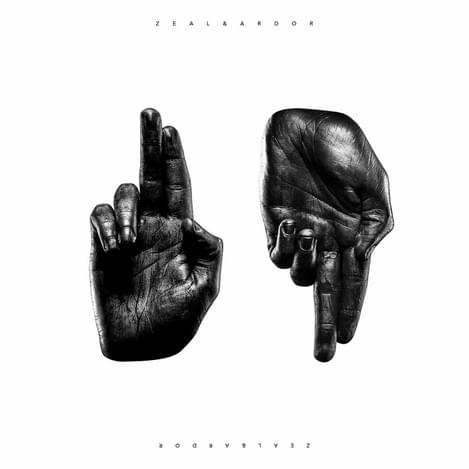With their self-titled third album, Zeal & Ardor commit to expressing unadulterated rage
"Zeal & Ardor"

“Run” features thrashy guitar rhythms and semi-riffs. Bass and drums oscillate between angsty spaciousness and synced ferocity. “Bow” spotlights the band mining the overlap between hard rock and gospel-infused metal, working with restraint as much as catharsis. On both tracks, Gagneux condemns consumerism and the way in which distorted Judeo-Christian values have permeated the global culture. While this isn’t a new position for him (or metal in general), his latest excoriations are unambivalently combative. As a result, his delivery is, on one hand, less emotionally nuanced than on previous outings; on the other hand, he and the band as a whole occur as more unwaveringly antagonistic. That is, the band effuses a heightened and sustained intensity that is frequently even if familiarly riveting, entrancing even if derivatively expressed.
The lyrics on “Götterdämmerung” are mostly indecipherable; Gagneux’s tone, however, effuses unmistakable misanthropy and virulent anti-authoritarianism, conjuring a fallen angel spewing vile at the Old Testament God. As braggadocio is part and parcel of hip-hop credibility, so “the demonic vocal” is practically synonymous with metal, a trademark that, due perhaps to its startlingly confrontive nature, never quite gets relegated to the cliché bin. At any rate, Gagneux does indeed hold his own as a potent screamer (compared to, for example, Thou’s Bryan Funck or Portrayal of Guilt’s Matt King).
Penultimate track “J-M-B” highlights the band’s ability to navigate stylistic, tonal, and atmospheric pivots. Gagneux, too, moves effortlessly between shrieks and a mercurial vocal reminiscent of Chris Cornell circa Audioslave. Closer “A-H-I-L” illustrates Zeal & Ardor’s affinity for post-black metal composition a la Liturgy’s Origin of the Alimonies. Interestingly, the last two cuts are the album’s most adventurous and memorable, the sequence’s belligerent tone sustained even as the instrumental palette is broadened to include idiosyncratic employments of volume, speed, and textural dynamics, as well as use of classical overtones. The set might have benefited from additional tracks along the lines of “J-M-B” and “A-H-I-L,” pieces that expand the project’s range and distinguish Zeal & Ardor from any number of black-, doom-, and death-metal ensembles.
As with previous work, Zeal & Ardor are clearly driven by eclectic proclivities. Their new release, however, displays a more consummate adoption of metal’s heavily distorted tones, sinister rhythms, and hellishly articulated vocals. Zeal & Ardor continue to assert their versatility, though the expression of unadulterated rage – toward earthly life, perhaps toward existence itself – has become their primary mission. They’ve committed to a fertile template, even if it’s a fairly well-trampled one.
Get the Best Fit take on the week in music direct to your inbox every Friday

Tunde Adebimpe
Thee Black Boltz

Julien Baker & TORRES
Send A Prayer My Way

Bon Iver
SABLE, fABLE





